What Is A Flat-Felled Seam: Ultimate Guide To Strength And Quality
A flat-felled seam is a special way to sew two pieces of fabric together. It’s known for being exceptionally strong and very neat. This method hides all the raw, unfinished edges of the fabric inside the stitch. You often see this type of seam on clothes like jeans and sturdy workwear because it lasts a long time and looks professional.
1. What is a flat-felled seam?
1.1 What is it in easy words?
A flat-felled seam is a very strong and tidy method of sewing. Think of it like neatly folding paper before you glue it. The main goal is to make the seam both strong and neat/flat. A key feature is that no raw, messy fabric edges are visible on either side. This seam is special because it tucks away all the untidy bits, making clothes last longer and look better.
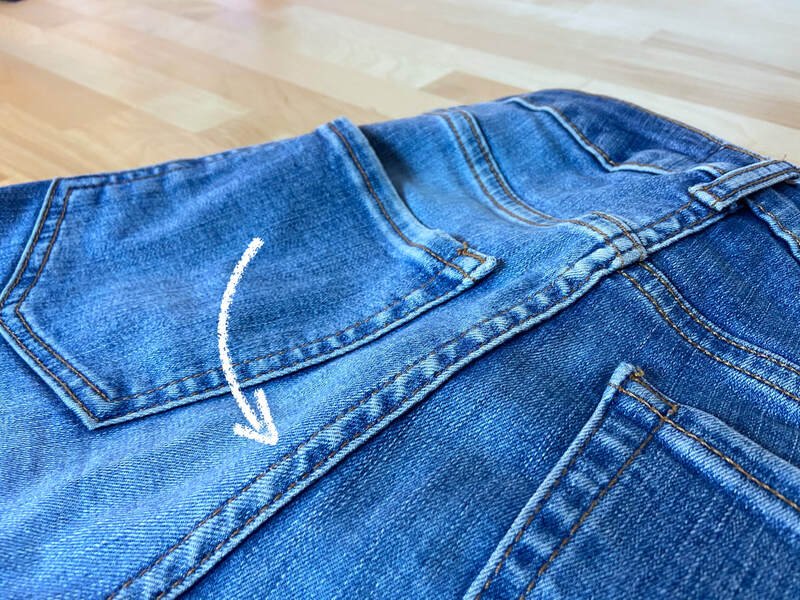
1.2 What it looks like
From the outside, the most common thing you’ll see with a flat-felled seam is two parallel lines of stitches. This is called topstitching (stitching visible on the top surface of the fabric). If you look on the inside of the garment, the seam will look very flat.
You might see only one main stitch line, or the fold of the fabric will be the main thing you notice. Crucially, no raw edges are visible on either side. This makes it look much cleaner than seams where edges might be frayed or just quickly sewn with a zig-zag stitch.
2. Why is a flat-felled seam so good?
2.1 Exceptional strength and durability
This seam is remarkably strong because the fabric layers are interlocked and folded over each other. Then, they are secured with two rows of stitches. This construction spreads out any stress or pulling on the seam. Importantly, because all raw edges are enclosed, it prevents the fabric from fraying.
Fraying is a common reason why other seams might fail over time. This strength makes it perfect for clothes that get a lot of wear and tear, like jeans, workwear, or items that are washed often.
2.2 Neat and tidy
The neatness of a flat-felled seam comes from how it’s made. All the raw fabric edges are carefully folded in and stitched down. This means they are completely hidden from view. The result is a clean, professional look both on the outside and the inside of the garment.
This also makes the seam smoother against the skin. Without scratchy, raw edges, clothes like unlined shirts or jackets feel more comfortable to wear.
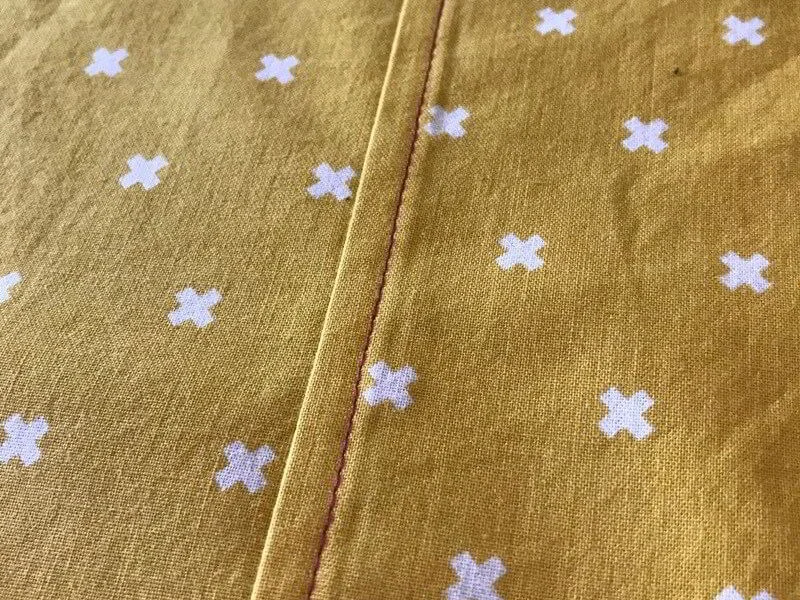
2.3 Looks professional and clean
The tidy look of a flat-felled seam, with no messy edges and its distinct double stitching, often signals higher quality. It contributes to a professional appearance in garment construction methods.
This seam shows that care and attention to detail went into making the garment. It’s not the quickest seam to produce, so its presence often means the maker invested in creating a better, more durable product.
3. How to spot a flat-felled seam on your clothes
3.1 Look for two lines of stitches
The easiest way to start identifying a flat-felled seam is to look on the outside of sturdy clothes. Check items like your jeans, work shirts, or jackets. Look for two parallel lines of stitches on the outside of the garment. These visible stitches are known as topstitching. Think about your favorite pair of jeans. Look at the seams on the legs – you’ll probably see these two stitch lines clearly.
3.2 Check the inside of the garment
Next, turn the garment inside out. On the inside of a flat-felled seam, you will usually see one main stitch line, or the fabric fold itself will be very clear. The seam will lie very flat against the fabric.
The most crucial thing to confirm is that there are no loose, raw, or frayed edges. All edges are tucked neatly inside the seam, demonstrating good raw edge enclosure. Other types of seams might show raw edges or edges finished with an overlock (zig-zag) stitch on the inside, which looks quite different.
3.3 Feel the seam
You can also identify a flat-felled seam by touch. It should feel relatively flat and smooth, not too bulky, even though there are multiple layers of fabric. It should also feel strong and secure, not flimsy. The construction method distributes the fabric layers evenly, which creates this flat feel.
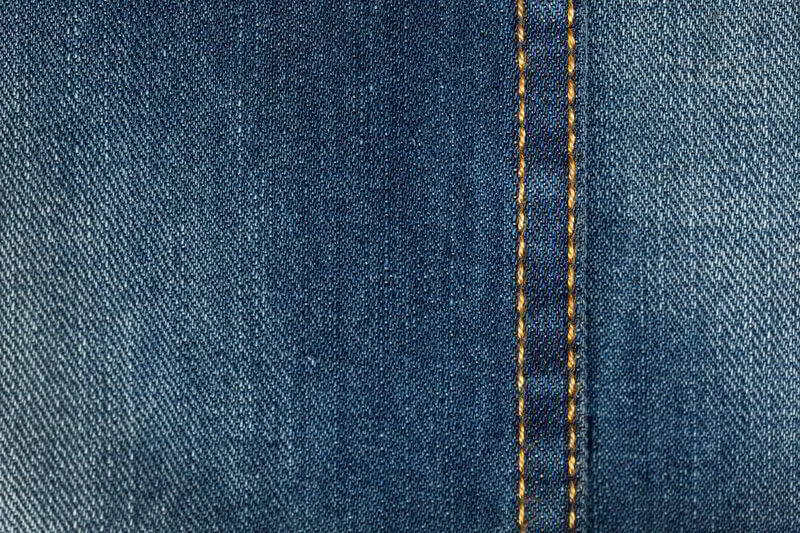
4. Where can you find flat-felled seams?
4.1 Jeans are a classic example!
Jeans are probably the most common garment where you’ll find flat-felled seams. Look closely at the inseams, the side seams, and sometimes the yoke. Denim fabric is sturdy, and jeans need a lot of strength and durability because they go through a lot of wear.
This makes the flat-felled seam an ideal choice for jeans inseam construction. Jeans are probably where most people first notice flat-felled seams, even if they don’t know the name. They’re built to last, and these seams are a big reason why.
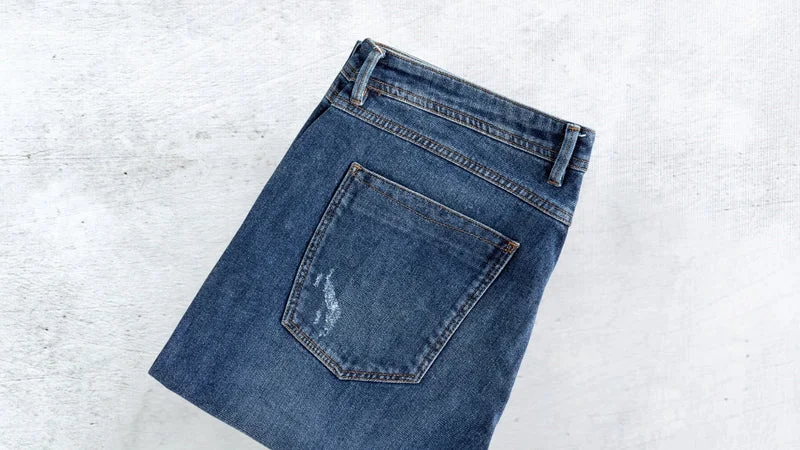
4.2 Work clothes and uniforms
You’ll often find flat-felled seams on workwear garments. Think of clothes designed for physical labor, like construction shirts, mechanic’s overalls, utility pants, and sturdy jackets. These items face high stress, rubbing, and need to be washed frequently and toughly.
The durability of the flat-felled seam is perfect for this kind of heavy-duty apparel, ensuring durable uniforms last longer.
4.3 Outdoor and sporty clothes
Some heavy-duty apparel for outdoor activities also uses flat-felled seams. This includes items like heavy jackets, canvas bags, tents, and gear bags. You might also see them in rugged sportswear where durability against the elements or intense activity is important.
The seam’s resistance to tearing and ability to withstand prolonged use in harsh conditions makes it suitable for outdoor clothing seams and durable sportswear construction.
4.4 Some children’s clothes
Flat-felled seams are also used in some durable children’s clothes. Examples include denim overalls, sturdy play pants, and little jackets. Children are very active, and their clothes are washed often. The durability of this seam helps these clothes withstand rough play and frequent laundering, making for sturdy kids clothes.
5. Why do makers choose flat-felled seams?
5.1 For strength in high-stress areas
The main reason makers choose the flat-felled seam is its exceptional strength. Designers often use this construction method in parts of a garment that experience a lot of stress. These high-stress seam areas include crotch seams, armholes, and side seams.
Using a flat-felled seam here helps prevent the seams from bursting or tearing. Designers use this seam to reinforce high-stress areas, which is crucial for preventing tears and ensuring the garment lasts.
5.2 When a clean finish is important
Besides strength, makers choose flat-felled seams when a tidy look throughout the garment is desired. This is especially true for unlined garments, like most shirts and denim jackets, where the inside of the seam is visible or touches the skin.
The enclosed raw edges are key to this clean finish. This also improves comfort by preventing scratchy edges, leading to a more comfortable clothing finish. Well-made unlined jackets often feature this seam for a superior internal finish.
5.3 For specific types of fabric
Flat-felled seams work best with medium to heavy-weight fabric. These fabrics can hold a crisp crease and handle multiple layers without becoming distorted. Good examples include denim fabric, canvas material, twill, sturdy cotton, and robust synthetics. For very lightweight, sheer, or delicate fabrics, this seam can sometimes create too much bulk, pucker, or pull.
While not impossible for very skilled sewers, it’s less ideal for these fabrics. Sewers know that fabric compatibility is key for specific seams. Flat-felled seams work best with fabrics that can hold their structure, such as denim or canvas.
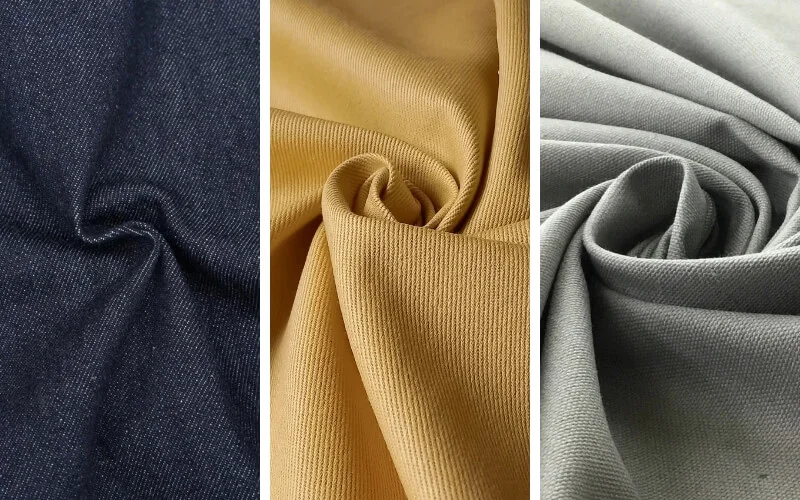
6. Flat-felled seams and your brand’s details
6.1 A sign of quality construction
Attention to construction details, like using flat-felled seams, can positively impact how customers see a brand’s commitment to quality. It signals care, durability, and thoughtful manufacturing. This attention to garment details for branding can enhance the perception of clothing brand quality.
6.2 Considering labels and finishing touches
Durable seams like flat-felled help garments last longer. In a similar way, quality branding elements, such as a well-made Woven Label, also need to endure. Strong seams and quality labels complement each other. They both contribute to the overall product value and how it is perceived.
Often, labels are placed near seams. At Packlove, we believe every detail matters. A durable seam pairs perfectly with a lasting brand label, both telling a story of quality. We help brands choose labels like Woven Labels that live up to the garment’s construction and enhance garment finishing touches. Explore our Woven Label options for your brand.
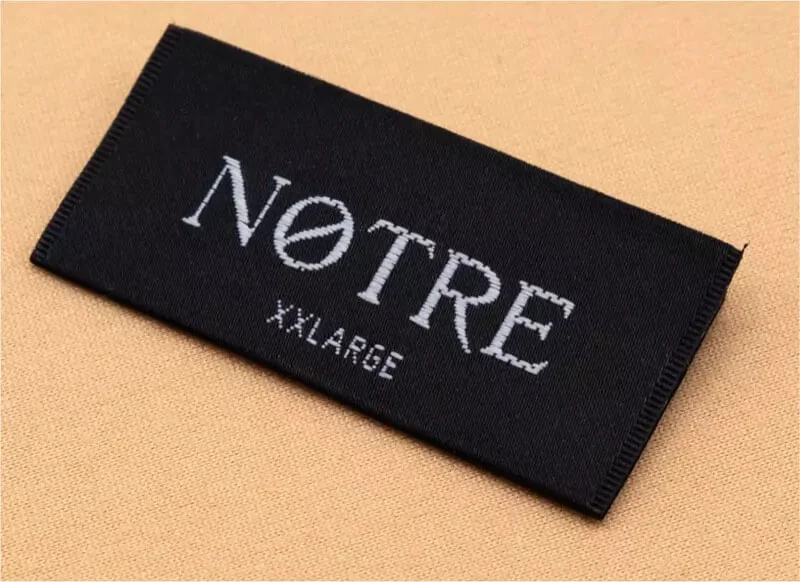
7. Frequently asked questions
7.1 Is a flat-felled seam the same as a French seam?
No, they are different, though both provide a neat finish. A French seam is typically used for more delicate fabrics and looks different – it creates a small, neat ridge on the inside. A flat-felled seam is flatter, usually shows two lines of stitching on the outside, and is known for its strength. These are different types of sewing seams.
7.2 Can I make a flat-felled seam by hand?
Yes, it is possible to sew a flat-felled seam by hand with patience and practice. However, using a sewing machine is much faster and helps achieve the even, consistent stitches that are important for both the look and strength of this seam.
7.3 What is a “run and fell seam”?
“Run and fell seam” is another name often used for a flat-felled seam. Sometimes it might refer to a very similar technique that achieves the same result: a strong, flat seam with enclosed edges. For most purposes, you can consider the definition of a run and fell seam to be the same as a flat-felled seam.
7.4 Why are flat-felled seams used on denim so often?
Denim fabric is strong and heavy. Jeans, as a garment, need to last and handle a lot of wear and tear. The flat-felled seam is also very strong and durable. This makes it a perfect match for the strong denim fabric and the tough job that denim garments perform. This is why denim uses flat-felled seams so frequently.
Explore more:
Flat-felled seams are distinguished by their exceptional strength and durability, along with the creation of a very neat finish, as all raw fabric edges are completely enclosed. Consequently, these seams are frequently found on robust items such as jeans, work clothes, and other durable clothing designed for longevity. Indeed, the presence of a flat-felled seam is often regarded as a clear indicator of a well-made garment, signifying both resilience and a polished appearance.
Have more questions about garment construction details or how high-quality finishing touches like custom labels can elevate your brand? The Packlove team is here to help. Contact us for friendly advice and solutions for your packaging and branding needs. Want to learn more great tips for your brand? Explore other helpful guides and insights from Packlove on our blog.






















